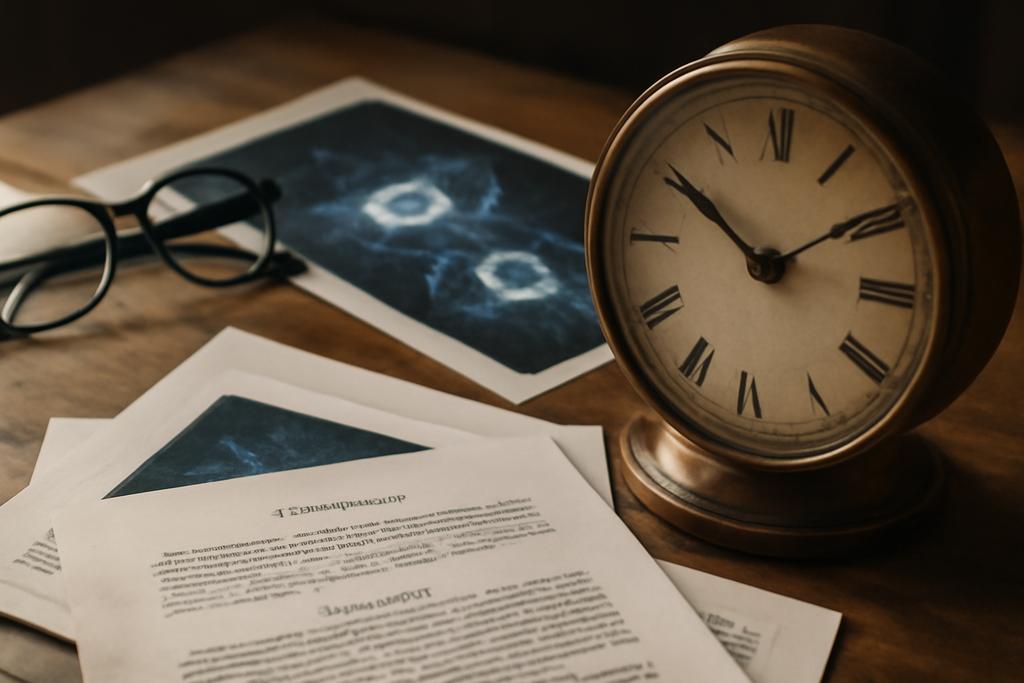Physicists have long grappled with entanglement, that bizarre quantum phenomenon where particles become intertwined, their fates mysteriously linked regardless of distance. But what if entanglement isn’t just a spatial affair? What if time itself is entangled?
A New Kind of Entanglement
That’s the provocative question posed by a recent paper from Ghent University and the Jagiellonian University, exploring a concept called “temporal entanglement.” Led by Michal P. Heller, Fabio Ori, and Alexandre Serantes, the research delves into the possibility that moments in time, much like distant particles, can be entangled in a fundamental way. This isn’t about the everyday notion of cause and effect; rather, it’s about a deeper, more quantum-mechanical connection between temporal events.
Imagine two seemingly unrelated moments in the life of a quantum system. Traditional physics might view these moments as independent snapshots. But what if they were secretly connected, their properties inextricably linked by an invisible thread of entanglement? This is the essence of temporal entanglement, a notion that stretches the intuitive boundaries of our understanding of both time and quantum mechanics.
From Space to Time: A Mathematical Leap
The researchers didn’t simply invent this concept from thin air. Their work builds on existing ideas about entanglement entropy—a measure of how much quantum entanglement exists within a system at a given moment. The key insight? They discovered a way to mathematically “rotate” the framework of spatial entanglement, essentially transforming a description of entanglement *across space* into one about entanglement *across time*. It’s a remarkable twist on a well-established concept.
This mathematical transformation, however, isn’t as straightforward as flipping a coin. It involves a complex interplay of theoretical physics concepts, including analytic continuation—a technique that extends mathematical functions beyond their original domain of definition—and the crucial role of the light cone, the boundary separating the region of spacetime influenced by an event from the rest of the universe. It’s a bit like taking a flat map of the world and trying to transform it into a globe. The transformation isn’t perfect, requiring an additional layer of mathematical complexity and care.
Holography: Painting a Picture in Higher Dimensions
To make their abstract concept tangible, the researchers leveraged the power of holography, a remarkable idea in theoretical physics that suggests our three-dimensional universe might be a projection of a higher-dimensional reality. In this framework, entanglement entropy is reflected by the area of a surface in this higher-dimensional space. The researchers found that their mathematical transformation of spatial entanglement entropy translates directly into a transformation of these holographic surfaces.
This translation isn’t merely a mathematical exercise; it reveals a hidden geometrical structure reflecting temporal entanglement. They found that in certain scenarios multiple possible holographic surfaces—different ways of “seeing” temporal entanglement—emerge. This is analogous to having multiple ways to draw a map of the same territory, all accurate but with different perspectives. The researchers devised a novel prescription for selecting the most physically meaningful interpretation from these alternatives.
Implications and Future Directions
The implications of this work are profound, pushing us to rethink the very nature of time in the quantum realm. This research opens doors to exploring a range of new questions. For instance, could temporal entanglement play a role in the mysterious arrow of time? Could it explain the irreversibility of time’s flow in the macroscopic world despite the time-symmetric nature of fundamental physics?
The study also has more immediate implications for our understanding of entanglement in strongly coupled quantum field theories, systems where particles interact strongly and are difficult to analyze using traditional methods. This work offers a potentially powerful new tool for analyzing these complex systems, paving the way for further breakthroughs in our understanding of quantum matter.
This is just the beginning. The researchers suggest many paths for future investigation, including applying their framework to a wider range of systems and exploring the relationship between temporal entanglement and other fundamental concepts, such as the black hole information paradox. The exploration of temporal entanglement promises to be a fertile ground for discoveries that will significantly advance our understanding of the universe.










